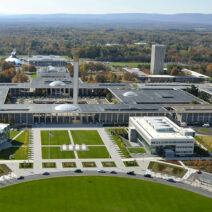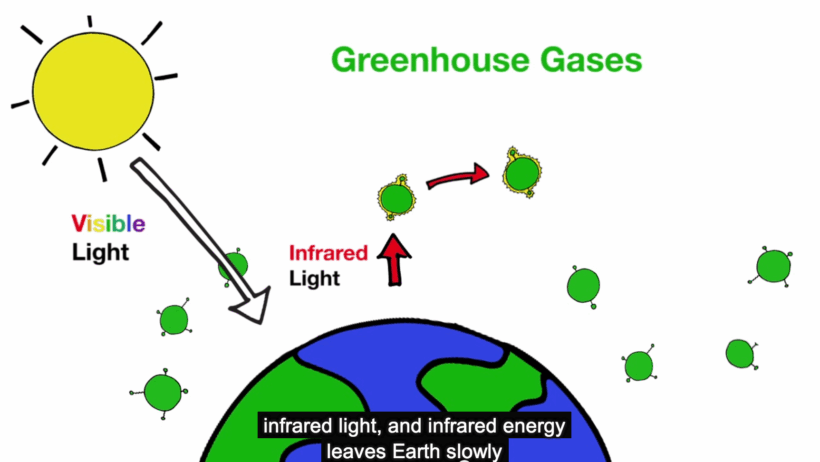Global warming stands as one of the most pressing challenges of our time, a looming specter that shapes the environment and influences the future of life on Earth. Understanding its mechanics offers clarity beyond the sensational headlines that often embellish the discourse surrounding climate issues. To comprehend how global warming works, one must delve into the intricate web of cause and effect that binds human activity to climatic shifts, akin to a tightly woven tapestry where each thread represents an aspect of our environment, economy, and behavior.
At the heart of the phenomenon is the greenhouse effect, a process critical to maintaining Earth’s temperature equilibrium. Imagine Earth as a giant greenhouse, sunlight streaming in to warm the interior. Some of this radiation reflects back into space, while a portion is captured by the planet’s atmosphere, primarily due to the presence of greenhouse gases (GHGs) like carbon dioxide (CO2) and methane (CH4). These gases act like a blanket, retaining heat that would otherwise escape, thus enabling a climate suitable for life.
However, the warmth that nurtures life can also become our undoing when GHG concentrations grow excessively due to anthropogenic activities such as burning fossil fuels, deforestation, and industrial processes. This increase is reminiscent of an unwatched kettle on the stove—the heat intensifies over time, leading to an eventual boil. The atmospheric accumulation of GHGs is thus akin to a metaphorical tightening of the blanket, hampering the ability of the planet to cool down adequately.
As human society industrialized, so too did our reliance on carbon-heavy fuels, releasing substantial quantities of CO2 into the atmosphere, akin to pouring melty wax into an open flame. The consequences became evident as global temperatures began to rise. Each increment of a degree may seem trivial, yet it precipitates drastic ramifications. Seasons grow erratic, polar ice caps wane, and sea levels rise, engendering a cascade of environmental alterations.
Increased temperatures also amplify the frequency and intensity of extreme weather phenomena. Heatwaves become more oppressive, storms more ferocious, and droughts more pervasive. Such climatic cataclysms are not random acts of nature; they are the direct sequelae of our atmospheric modifications. Picture a symphony where one instrument, the GHGs, gradually becomes the dominant force; the entire orchestra shifts out of balance.
Though the science of global warming is grounded in empirical data, its impacts manifest differently across the globe. While some regions may suffer devastating floods, others face parched landscapes. Vulnerable populations—often residing in developing nations—bear the brunt of these changes, exacerbating existing inequalities. This disparity brings to mind the fable of the tortoise and the hare, where the unassuming tortoise, representing those least responsible for emissions, navigates treacherous terrains that the swifter hare, symbolizing developed nations, has long neglected.
The ramifications of global warming extend beyond mere meteorological fluctuations; they manifest through biodiversity loss and ecosystem destabilization. Ecosystems like coral reefs, often referred to as the “rainforests of the sea,” illustrate this tragedy poignantly. As ocean temperatures rise and acidity increases due to elevated CO2 levels, coral bleaching occurs—where vibrant corals expel the essential algae living symbiotically with them—transforming thriving underwater cities into ghostly remnants, much like vibrant neighborhoods abandoned to decay.
Addressing global warming necessitates a paradigm shift. It requires us to rethink our relationship with energy, production, and consumption. The metaphor of a ship navigating turbulent waters is fitting; to steer toward calmer seas, we must collectively chart new courses that embrace renewable energy sources. Wind, solar, and hydroelectric power hold the promise of sustainable futures, reducing our reliance on carbon-intensive fuels and mitigating environmental degradation.
Moreover, lifestyle alterations are imperative. Energy efficiency, waste reduction, and sustainable agricultural practices are not merely buzzwords but essential components of a collective strategy to combat climate change. As individuals, our actions matter. Small steps, like reducing single-use plastics or promoting plant-based diets, accumulate into significant impacts over time—akin to pebbles dropped in a pond, sending ripples outward.
However, we cannot overlook the vital role of policies and technological innovations in this struggle. Leaders must prioritize climate initiatives, enact stringent regulations on emissions, and invest in research that propels green technology to the forefront. It is time to harness human ingenuity, to design a climate-resilient world that honors our commitment to stewardship of the Earth.
The call to action is clear: we must transcend complacency and embrace proactive measures. An effective battle against global warming requires unity—a cohesive recognition that we share a common abode. Embracing the concept of “us” over “them,” we can foster a global community determined to protect the planet. Just as the threads of a tapestry intertwine to create a collective representation, so too does our combined effort forge resilience against climate adversities. We are stewards of the Earth, tasked with nurturing it for future generations.
In conclusion, global warming operates through a complex interplay of natural and anthropogenic processes. Far from being an abstract notion reserved for scientific discourse, its impacts are tangible and immediate. Acknowledging these connections empowers individuals and communities to act. Together, through informed choices and comprehensive policies, we can embark on a path toward sustainability, ensuring that the ship sails smoothly toward a rejuvenated world.







